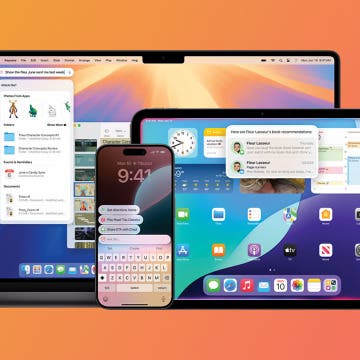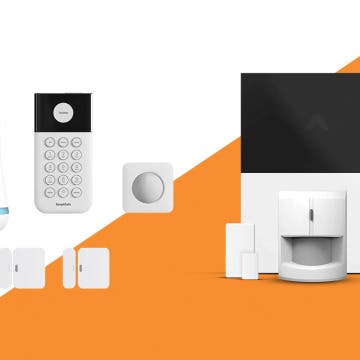In the last few days, I've participated in several discussion threads in the Phone Cameras / Tablets & Apps forum of DPReview. (See for example THIS, THIS and THIS). In order not to have to repeat the same facts again and again in future discussions, I've decided to dedicate a complete article to the question of using the iPad as a photo frame.
I frequently travel around the World and, during this, I take tens of thousands of shots. (No, don't think of anything artistic, I'm “only” a point-and-shooter that want to record what he sees.) After throwing away the worst shots, I still generally have thousands of pics of every new town I visit. As I like showing my travel shots to both friends and in the family, I tend to keep them on my 64-Gbyte iPad 3, which, thanks to the high-resolution and high-quality screen, is perfectly suited to function as a photo frame.
Not so Apple's own tools, iTunes on the desktop (the app you MUST use to transfer photos to the stock Photos app on the iPad), when photo synching works at all (sometimes not even it does), greatly increases the size of the transferred photos.
1. Almost three times the original size?!
Just an example. I've kept some 3900 shots I've shot in Pisa, Italy, this March. In order to be able to shoehorn them into my iPad 3, I've decided to reduce their quality to around 50%. Then, they only take 300-900 kbytes each but still are of acceptable quality even when “pixel peeping”, that is, fully zooming in to the pixel level. The entire image library only takes up exactly 3 Gbytes on my desktop computer. How much storage do you think it takes up on my iPad 3? Almost three times(!) more: 8.1 Gbytes. All this because of the added thumbnails.
Why the size increase? you may ask. So that the iPad can very quickly display all thumbnails of all the pics at the bottom image slider and when you turn to the next image (or select an image from the slider), it could present an image not needing decompression / decoding. As you may have guessed, decompressed images can be HUGE. Yes, all this is done so that even the first iPad could really quickly navigate the synchronized (and, for that matter, via the Apple's Camera Connection Kit, imported) pics.
Can this alll be disabled? Nope. As a rule of thumb, if you do use iTunes for synchronization, you cannot get rid of this size increase, not even via CCK “hacking” or emulation. This will be discussed in the next subsection.
1.1 Apple's Camera Connection Kit (CCK)
Unfortunately, it's not possible to “emulate” what Apple's Camera Connection Kit (CCK) does when you import photos. Basically, creating a 101IMPRT directory, even on a non-jailbroken iPad (as does the CCK upon the first import; then, on the second, it created a 102IMPRT one and so on, always increasing the serial number, regardless of the number of pics actually imported) under DCIM and transferring your images there from your desktop is useless. I think it'd be comparatively easy to “hack” the sqlite / plist files as they're also in the writable area (even on a non-jailbroken iPad) but I didn't want to spend time on it as it'd have been far too hard for casual users to edit these files.
Speaking of the CCK, you may ask whether, in order to try to reduce the storage size used, there's any point in trying to write back the images you'd like to show to a card or a USB stick compatible with the CCK. Unfortunately, it seems there isn't – while the DCIM/XXXIMPRT directory(ies) will indeed have the original, unaltered JPG's, the PhotoData/Thumbnails directory (inside the, without jailbreaking, only accessible Media) will still contain their thumbnails in 64x64, 158x158, 240x240 and 332x332 sizes on the iPad 3 (on previous iPads, half of them).
Note that the data files in the PhotoData/Thumbnails contain the thumbnails of both imported and, via iTunes, synchronized images. The latter, however, are transferred from the desktop untouched; that is, with the thumbnails already in them. A double-hit on the storage...
In addition, it's not possible to edit the input folder names (or, for that matter, any folder name in Photos) so you couldn't separate your photos into albums of meaningful names.
All in all, CCK-based importing is not only very awkward (the need to use an external medium for transferring) but also, it seems, results in the same size increase as just synchronizing through iTunes.
What can be done, then? I answer this question in the next section.
2. The solution: third-party image viewers!
I've very thoroughly tested the available image viewers as a full replacement for the built-in Photos app for strictly image presentation and slideshowing (but not necessarily editing) purposes. My minimal requirements have been as follows:
- data transfer should be considerably faster than the slowish image synchronization done by the built-in image synchronization of iTunes. (The latter is very slow even with already-generated, local thumbnails in the “iPod Photo Cache” subdirectory – simply transferring files via simple iTunes File Sharing is at least 2-3 times faster.)
- must not use any more storage than the original shots themselves (which, again, rules out the stock Photos entirely because of its HUGE thumbnails)
- must have some GPS mapping capabilities: in addition to displaying the pure coordinates of an image (coming from the EXIF metadata of it), it must be able to also show it on the map. The latter, preferably, also with terrain or hybrid view. (Unfortunately, the stock Photos is only able to display standard (street) maps without any satellite / hybrid / terrain info, as opposed to the also built-in Maps application.) (Please see THIS article on adding GPS coordinates to shots.)
- the ability to display the EXIF data are welcome but not a must (the stock Photos can't do this either)
- some kind of a date-based image list sorting would also be preferable. The stock Photos is severely restricted in this respect: it displays the images strictly(!) in the filename order. This can be problematic for the following reasons:
a. if you use more than one camera (like me – I generally use the Nikon P300 indoors because of the very good low-light performance; outdoors, however, I tend to use the Panasonic ZS3 because of its huge zoom range and better low-light image quality), the stock Photos will not display these images intermingled (mixed). With the above-mentioned Nikon vs. Pana example, the former creates photos named “DSCNXXXX.jpg”, the latter “PXXXXXXX.jpg”. As Photos uses strictly the filename to order images, it will always display the Nikon images first and it's only when they're all displayed that it starts displaying the Pana ones and just can't make it display images in the order of shooting time.
b. most cameras (for example, Canons as well) use the already-mentioned DSCNXXXX.jpg naming convention, which means the counter will continue from 0000 after reaching 9999. If you shoot tons of images all the time (like me), it might be possible that the counter is reset while shooting images on an occasion you'd like to store in one folder only, instead of two folders for the first half (images up to DSCN9999.jpg) and the second one (images starting from DSCN0000.jpg after having reached 9999). However, then, Photos will start displaying images starting with DSCN0000.jpg – that is, not from the beginning of your trip. (Or the first image shot in the current folder.)
2.1 Photo Manager Pro – the winner!
Of the several picture viewer / editor apps I've tested, I've found Photo Manager Pro the best. (Note that it's $1 only now with the new release, which is 70% off. A no-brainer, if you ask me!)
2.1.1 No global GPS map!
The only real shortcome of the app is the lack of the ability to display the GPS location of its images as does Photos. All it is capable of is “only” displaying the currently displayed shot's location. Let me show you two screenshots of the superior approach of Photos (as with most of my articles, you can click the thumbnails for the original, uncompressed, iPad 3 Retina-sized & quality image!):

The first shot shows the places I've visited in the entire Pisa. For the second screenshot, I've zoomed in quite a bit to only show the Pisa Tower and its surroundings. There, I've also tapped the flag on the Tower itself so that it displays the shots taken at the top.
The ability to display everything on one map and also present a more detailed view when zooming in, along with the first shot at the given place when tapped, is simply great. Its biggest advantage is the ability to quickly find anything. For example, when I want to show my Pisa Tower shots, I don't need to scroll around the main filelist to narrow down the selection. I simply switch to the Places tab in Photos, quickly zoom into Pisa Tower and when the zoom level is sufficient enough to filter out shots taken elsewhere, tap the flag and, then, the thumbnail to access the images. This all saves a LOT of time and energy. I really hope the devs of Photo Manager Pro (PMP) implement this feature.
2.1.2 Showing the position (and EXIF data) of individual images
As I've already mentioned, PMP supports displaying the position of the current image, even with Hybrid view (probably the most useful one). An example shot showing this:
The app is also able to present the EXIF data of images:
2.1.3 Sorting
And here's an example of the strictly date-based sorting, which, among other things, allows for playing back images taken with different cameras strictly in time order (as opposed to Photos' filename-only ordering). This can be clearly seen in the following screenshot:
The uppermost photo (a panorama pic) is shot by the Nikon (see the filename!). Immediately after that, I continued shooting with the Panasonic, which can also be seen from the different filename. The last shot of the third row is from the Nikon again, as can easily be spotted based on the different filename.
2.1.4 Folder support
I tend to organize my shots into folders: basically, on the basis of one-folder-per-town, should be there more than a handful shots taken in the given place.
If you have several folders to transfer to your iDevice, you won't have problems with the stock Photos app. You just provide the parent directory of the folders (assuming there's only one level of directories and not additional subfolders inside each folder) and Photos will see them all after the synchronization.
Not so with PMP. First, you can only drop individual JPG files into the app via iTunes File Sharing and not directories, “thanks” to the major restrictions of iTunes. (Actually, if you have iExplorer / Phone Disk, you could transfer entire directory structures directly. These subfolders, however, aren't supported by PMP.) This means you need to transfer the individual JPG files in each of the subdirectories manually, recreating the whole folder structure on the iDevice (including having to create a folder on the iDevice too). This, if you have numerous subfolders, can be quite lengthy.
Fortunately, PMP supports transfer of entire subdirectory structures via the FTP protocol using the local Wi-Fi. It's a lot slower than transferring photos via iTunes File Share, though.
2.1.5 Other goodies: RAW etc.
PMP has just received RAW for Nikon and Canon cameras. This is pretty unique among all iOS image viewers.
2.2 Other viewers
2.2.1 Video players
I've very thoroughly tested all the video players for their JPEG displaying / mapping / etc. capabilities. Unfortunately, none(!) of them have any image handler worth writing home about.
You can also check out all this in the beta, work-in-progress version of my main chart HERE. Look for the section starting with “Still (JPG) image handling”. Note that, here, the first column lists the stock Photos (instead of Videos listed in everywhere else), along with PMP.
2.2.2 Smart photo album - PhotoCal
While I don't consider Smart photo album - PhotoCal (lite version, with ads but no other restrictions, also available) as good an alternative as PMP, it has features not found in PMP. The most important of them is the ability to group images via shooting date / time (see the day-level calendar at the top left and the minute-level timeline just under it):

Also, it also has a generic, built-in GPS map with thumbnail support (something REALLY missing from PMP):

(unfortunately, the map can't be made bigger and you can't use non-standard views, unlike with PMP, where hybrid / satellite view is also available.)
It supports showing the a image's GPS exact position by tapping the icon in the upper left corner:

(Shot by my wife in, as you may have guessed, in the Pisa Tower.)
Unfortunately, the biggest problem with the stock Photos, the high storage requirement, isn't fixed as this app can only access images in either the camera roll or images synchronized from iTunes itself. That is, it's not possible to circumvent the problem of huge image files if you use this app. Also, it can't zoom into selected images at all (unlike the stock Photos and PMP), which is also a big problem.
2.2.3 Another Photo Viewer, GoodReader, iPhoto
The (otherwise, free) Another Photo Viewer is really incapable: it has no features related to GPS handling. However, it supports iTunes transfer and, therefore, storage usage decreasing. If you don't need mapping support or don't want to pay for the photo viewer, you may want to check it out.
GoodReader, the (probably) best all-in-one document reader / handler app for iOS, also has some basic photo rendering capabilities (from its own repository, saving quite a bit of storage), but nowhere as good as the stock Photos or PMP.
Finally, Apple's new iPhoto, while it's a decent (albeit not the best on the platform) photo editing capabilities, just isn't suited for “basic” photo viewing / slideshowing. For example, its GPS mapping capabilities are pretty bad: there's no generic “show all places I've been to” view and the map presented for an individual photo is pretty bad: you can't fully zoom in to the map (which is, by the way, isn't the same Google map as in Maps or other apps – iPhoto uses the less up-to-date and precise OpenStreetMap maps outside the US) and, of course, there's only Standard (no Satellite / Hybrid) view:
Needless to say, iPhoto can only access images in the Camera Roll or synched from the Photos tab in iTunes. While it does have iTunes File Sharing support (as opposed to the stock Photos app), it can't access the files dropped to there, meaning there's no way of storage saving when you use it.














